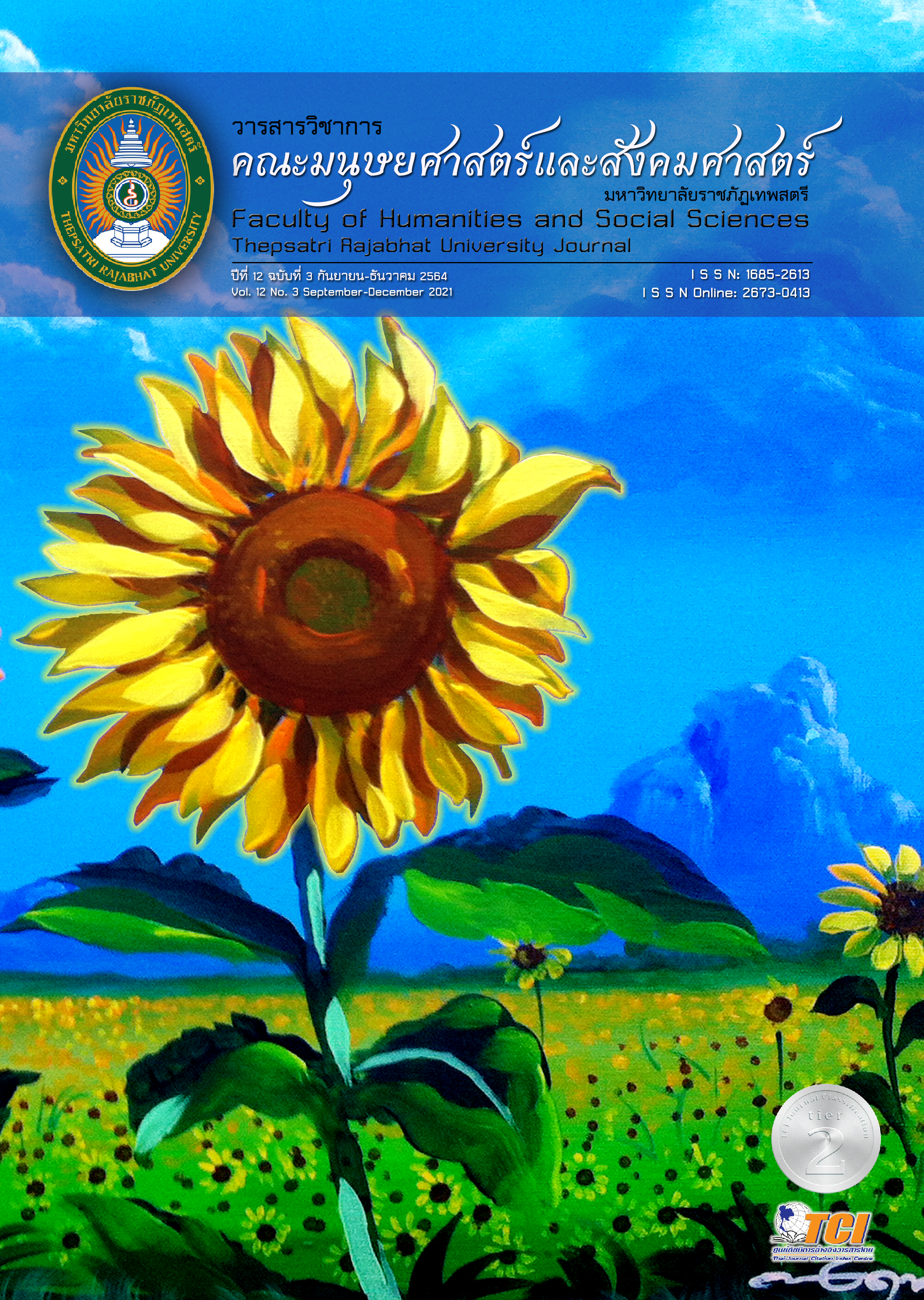The Cost Reduction of The Rice-Mill by Using Green Logistic and Supply Chain The Cost Reduction of The Rice-Mill by Using Green Logistic and Supply Chain
Main Article Content
Abstract
The purposes of this study were to studies 1) the problems of environmental logistics management of rice mills in Sing Buri province. 2) the factors affecting logistic management. 3) guidelines for cost reduction for the rice mills by using environmental logistic operations. The researcher used the qualitative study by exploratory study by In-depth interview from the rice mill operators. The examples are specific to the operators and the mill owner. Group discussions also included a farmer who was bringing rice to sell to the rice mill which totally 9 people. In this study, the researcher uses data analysis through content analysis, context analysis, And descriptive analysis. The study indicated that, the problem of the beginning was from Farmers do not pay much attention to environmental issues. they have been experimented, but not successful, and the yield is down, so the original chemical is back to used. In the middle of the process, it is found that rice mill operators have the concept of logistics management for the environment in the factor, by using modern machine, using conveyor systems to makes the error less. The use of raw materials left to make the benefit for the operation. Factors affecting logistics management for the environment. The main factor influencing environmental logistics management for the rice mills is the cost. Because some activities require a very high investment, such as using a conveyor belt, treatment ponds, etc. The second is the human factor. It is a must in order to cultivate the consciousness of all workers under the 3Rs principle. The guideline to reduce the cost of rice mills is to apply the 3Rs principle to operate from the upstream such as farmers, middle processes, rice mills, and reduce the use of recycled materials. In addition to protecting the environment, it is also a process to reduce the operating costs of rice mills in the long run.
Downloads
Article Details
The content and information presented in articles published in the Academic Journal of the Faculty of Humanities and Social Sciences, Thepsatri Rajabhat University, are solely the opinions and responsibilities of the respective authors. The editorial board of the journal neither necessarily agrees with nor assumes any responsibility for such content in any manner whatsoever.
All articles, information, content, and images published in the Academic Journal of the Faculty of Humanities and Social Sciences, Thepsatri Rajabhat University, are the copyright of the journal. Any person or organization wishing to reproduce, disseminate, or otherwise utilize all or any part thereof must obtain prior permission from the Academic Journal of the Faculty of Humanities and Social Sciences, Thepsatri Rajabhat University.
References
กรมโรงงานอุตสาหกรรม. (2555). หลัก 3Rs กับการจัดการของเสียในโรงงาน. สืบค้น กันยายน 10, 2558, จาก http://www.dpim.go.th/articles/article?catid=136&articled=330
นุชฎา จำเริญสาร, เอมอร แสนภูวา, อรรถพล ศิริเวชพันธุ์, และเชิดศักดิ์ ฉายถวิล. (2559). ภูมิปัญญาการทำนาเพื่อลดต้นทุนเพิ่มผลผลิตขององค์กรเกษตรกร กลุ่มมดงานสร้างเมือง จังหวัดพิจิตร. รายงานสืบเนื่องจากการประชุมวิชาการระดับชาติ การบริหารการพัฒนาสังคมและยุทธศาสตร์การบริหาร.
วรรษมล ธรรมหิเวศน์, และบุญทรัพย์ พานิชการ. (ม.ป.ป.). แนวทางการจัดการคลังข้าวเปลือกเพื่อการบริหารต้นทุนโลจิสติกส์ กรณีศึกษา: ห้างหุ้นส่วนจำกัด พรหมพิรามชัยศิริ 2.
วีรวัฒน์ มณีสุวรรณ, และธนัญญา วสุศรี. (2557). การจัดการกรีนโลจิสติกส์กับศักยภาพของผู้ให้บริการโลจิสติกส์ไทย. วารสารวิจัยและพัฒนา มจธ., 37(2), 215-226.
สุธิดา ทับทิมศรี. (2558). การบริหารจัดการโลจิสติกส์เพื่อรักษาสิ่งแวดล้อม Green Logistics Management. ในการประชุมวิชาการระดับชาติ ครั้งที่ 2 วันที่ 22 ธันวาคม 2558 (หน้า 874-880). กำแพงเพชร: สถาบันวิจัยและพัฒนา มหาวิทยาลัยราชภัฏกำแพงเพชร
สนั่น เถาชารี, และระพีพันธ์ ปิตาคะโส. (2555). การจัดการโลจิสติกส์และโซ่อุปทานข้าวในภาคตะวันออกเฉียงเหนือของประเทศไทย. วารสารมหาวิทยาลัยขอนแก่น, 17(5), 687-705.
สำนักงานมาตรฐานสินค้าเกษตรและอาหารแห่งชาติ. (2553). การปฏิบัติที่ดีสำหรับโรงสีข้าว Good Manufacturing Practices for Rice Mill. ประกาศในราชกิจจานุเบกษา ฉบับประกาศและงานทั่วไปเล่ม 127 ตอนพิเศษ 150 ง. สืบค้น มกราคม 23, 2561, จาก https://www.acfs.go.th/standard/download/GMP_rice_mill.pdf
สำนักวิจัยและพัฒนาข้าว กรมการข้าว. (ม.ป.ป.). องค์ความรู้เรื่องข้าว. สืบค้น มกราคม 23, 2561, จาก http://www.ricethailand.go.th/Rkb/organic%20rice/index.php-file=content.php&id=4.htm
สำนักงานคณะกรรมการพัฒนาเศรษฐกิจและสังคมแห่งชาติ. (2552). รายงานฉบับสมบูรณ์ โครงการศึกษาการเพิ่มขีดความสามารถในการแข่งขันของอุตสาหกรรมโลจิสติกส์ไทยระยะที่ 2. กรุงเทพฯ: ผู้แต่ง.
อมรรัตน์ ถนนแก้ว. (2559). การพัฒนาโรงสีข้าวสังข์หยดเข้าสู่มาตรฐานการปฏิบัติที่ดีสำหรับโรงสีข้าว : กรณีศึกษากลุ่มวิสาหกิจชุมชนบ้านเขากลาง. วารสารวิจัยเพื่อการพัฒนาเชิงพื้นที่ (Area Based Development Research Journal), 8(1), 78–99.
Porter, M. E. (1986). Competition in Global Industries. Boston, Massachusetts: Harvard Business Press.
Wilasinee, S., Imran, A., &Athapol, N. (2010). Optimization of Rice Supply Chain in Thailand: A Case Study of Two Rice Mills. In Sustainability in Food and Water (pp. 263–280). Retrieved January 23, 2018, from https://doi.org/10.1007/978-90-481-9914-3_27


